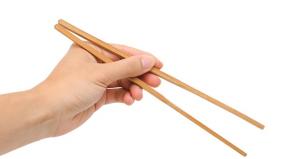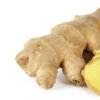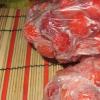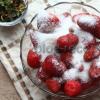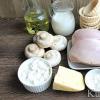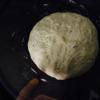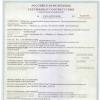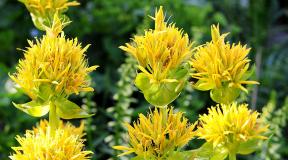Quince when ripe. Useful properties and use of quince, Japanese quince recipes
Quince is the only member of the genus Cidonia oblonga. It is a deciduous tree, rarely a shrub, from one and a half to five meters high. Differs in the oblique direction of the branches rising up. Quince bark is thin, scaly, red-brown, dark gray or brown-black. Young branches are brownish-gray, and shoots are gray-green.
The leaves are oval and ovate, alternate, often broadly elliptical, with a wedge-shaped or heart-shaped base, dark green in color. The flowers have a beautiful regular shape and short pedicels. Corolla white, pink or pale pink, up to 5 centimeters in diameter.
The quince fruit is a hairy, pear-shaped or spherical, false apple with a large number of brown seeds. Sometimes the fruits of cultivated quince reach a weight of two kilograms. The fruits of a wild plant are not large - only up to 100 grams. The pulp is not juicy, hard, astringent, tart, slightly sweet taste.
Common quince blooms from May to June, fruit ripening occurs in September or October. Quince is considered the most productive, growing on heavy loamy soils, but on sandy loamy soils it begins to bear fruit earlier.
Propagated by cuttings, shoots from the roots, grafting, as well as seeds, from which strong wildlings grow.
The natural range of quince covers a large area from Central Asia to the central and southern regions of Europe. Widely cultivated in Europe, North and South America, Oceania and Australia.
Quince cultivation Quince is propagated vegetatively by root offspring, vertical layering, cuttings and grafting. This is an unpretentious plant, high-yielding, beautiful and useful. The method of growing quince is no different from growing a pear or an apple tree. The tree grows well in sunny and warm areas, loves abundant watering, although it tolerates drought well. Seedlings can be planted in soddy soil. Mid-October or mid-April is ideal for planting quince. Seedlings with well-developed roots and a well-formed crown are selected, they are placed in pits 50–60 cm deep, the diameter of which should be at least a meter. Before planting a seedling, you need to fill up with humus or compost. For pollination (all varieties of quince are self-fertile), two or three trees should be planted side by side. In fruit-bearing trees, strong annual branches should be shortened. When thinning the crown, dry, damaged parts of the plant that touch other trees are removed. |
Collection and harvesting of quince The collection of quince fruits occurs as they ripen. The biological characteristics of quince determine the long shelf life of the fruits of this plant. Fresh, under the right conditions, they can be stored for up to five months. But, it is worth saying that fresh fruits are of little use for food. They are usually eaten baked or boiled. Also, quince fruits can be used to make jelly, marmalade, jam, candied fruits, compotes and juices with pulp. Due to the presence of fragrant essential oil in the fruits, which has a peculiar specific taste, quince is often used as a garnish for meat dishes. Canned quince makes up a large part of many national dishes of the Caucasian and Central Asian cuisine. Quince fruits can be dried and dried. For these purposes, fruits with remote seed chambers and skins are suitable. They are cut into slices, sprinkled with sugar and aged for a certain period at room temperature. Then the fruits are boiled in sugar syrup and dried in the oven. |
Useful properties of quince

Quince can be attributed to medicinal plants. Medicinal property possess not only the fresh fruits of the plant, rich in iron, but also the seeds collected during the processing of the fruits. For use in medicinal purposes seeds are dried at a temperature not exceeding 50 degrees.
A large amount of tannins and mucous substances that quince seeds contain determines their medicinal properties. Yes, in traditional medicine decoctions are prepared from the seeds, taken as a mild laxative or enveloping agent. The use of a decoction for diseases has a good effect. respiratory tract to reduce . The enveloping properties of the decoction in the form of lotions help with eye diseases. Also, a decoction is recommended for use as a cosmetic product that softens the skin.
Since ancient times, quince has been used to reduce the symptoms of periodontal disease and relieve pain in the form of lotions and compresses based on quince juice.
Fresh quince fruits are used for anemia and as cholagogue. The use of a decoction of the leaves of the plant will help get rid of early gray hair.
Quince is a plant related to apples and pears, but due to its tart and astringent taste, it is rarely eaten raw. Dishes prepared from quince retain all its useful and medicinal properties. The quince fruit contains biologically active substances, including a large amount of malic, citric and tartronic acids. There are also iron, zinc, phosphorus, copper, calcium, pectins. Bright yellow fruits give people C, E, B1, B2, B6, PP and provitamin A. The plant has antioxidant, antiviral properties.
Ripe fruit juice has a tonic, diuretic effect. Also, the fruits are used as a fastening, hemostatic and antiemetic. Quince is a valuable food product, due to the content of fructose, gum, ascorbic acid, starch, fatty oil amygdalin glycoside.
The chemical composition of quince
Specifications chemical composition quince fruits largely depend on the variety and place of growth of the plant. But their main useful property is considered high the nutritional value. This is due to the fact that the mature fruits of the plant contain a high percentage of fructose and other healthy sugars, tannins, essential oils, vitamins, citric and malic acids. The peel of the fruit contains ethyl esters, which give the quince a specific flavor.
The juice contains gum, ascorbic and malic acid. The seeds are rich in mucus, starch, amygdalin glycoside, tannins and fatty oil, which in turn contains glycerides of isoleic and myristic acids.
Application of quince

The unique properties of quince make it possible to use it as a means of reducing the negative effects on the body of viruses that cause various acute diseases. respiratory diseases. Juice and pulp with regular use have a positive effect on the body with elevated content cholesterol in the blood, treat the stomach and eliminate. The beneficial effect of quince on the gastrointestinal tract, on the process of digestion of food occurs due to the fiber contained in the fruits, this fruit can be safely included in the diet of people suffering from.
The action of the beneficial properties of quince is noted in violations of the functions of the nervous system. Substances-antioxidants do an excellent job of restoring the body after and nervous overstrain. After drinking quince juice, the mood improves, relief comes in patients. Quince helps with diseases of the ears, in the form of lotions, its decoction and juice are used for prolapse of the rectum and cracks anus. It is indicated for tracheitis, spastic colitis and with. Pureed fresh boiled fruits are used for liver diseases, the juice is recommended for use in the lungs.
Quince in cosmetology

A large amount of fruit acids contained in ripe and juicy fruits allows the use of quince pulp as cosmetic masks. Such masks have antiseptic and drying properties, nourish the skin well. To prepare them, a small amount of crushed pulp is mixed with various ingredients, which may be vegetable oils, egg yolk, starch, oatmeal or ground cereals.
For oily, tired skin and to remove teenage acne, the most suitable simple mask. To prepare the mask, you need to grate the ripe quince fruit on a fine grater, and then apply the pulp in a thin layer on the face, leaving the areas around the eyes and lips open. The mask should be kept for no more than seven minutes, then rinse with warm water.
Combination and normal skin requires the use of such a mask: the pulp of one quince fruit, grated on a fine grater, is mixed with well-ground egg yolk and steamed oat flour(for making flour two tablespoons oatmeal grind in a coffee grinder, then pour 50 ml of boiling water and let it steam well), applied warmly on the skin of the face and décolleté for no more than 10-15 minutes. Then the mask is washed off with warm water. The face should be lightly blotted with a napkin several times. Do not wipe with a towel in any case.
An excellent effect has a quince mask, suitable for all skin types. To prepare it, you need to grate the pulp of the fruit, then mix it with a teaspoon of oatmeal (you can use rice, buckwheat or oatmeal) and corn starch. The mixture must be thoroughly mixed and applied to the skin. Keep the mask on for at least 20 minutes, then rinse with water room temperature. After applying the mask, it is not recommended to go outside for one hour.
Quince pulp is recommended to use for the preparation of various peeling masses and scrubs. Thanks to the use of these products, dead skin particles are exfoliated, its appearance improves, blood circulation is restored, due to which the complexion becomes healthier and more attractive.

To prepare the scrub, it is necessary to grind the quince fruit together with the seeds, add a tablespoon of coarse salt, mix well and immediately apply with light massage movements to the skin of the face and décolleté. After three minutes, the scrub must be washed off, then the skin should be blotted with a napkin. After an hour, it is recommended to apply a thin layer of nourishing cream to the skin. Thanks to this scrub, the skin will become softer and softer, its condition and appearance will improve.
Quince pulp lotions have a good effect. In addition, they do not contain harmful dyes, preservatives and aromatic additives.
For oily skin healthy condition lotion with chicken yolk is suitable. It will help cleanse the skin of oily sheen and give it a velvety texture. To prepare such a lotion, you need to squeeze the juice from one fruit, add half a glass of purified medical alcohol and half a glass of camphor alcohol to it. The yolk of one egg should be beaten well, then the prepared solution should be introduced into it very slowly. Store the lotion in a cool, dark place.
You can prepare an infusion of quince, which will well cleanse the skin of the hands from dirt and fat, and nourish it. To do this, you need to cut the medium-sized quince fruit into small pieces, removing the seeds and the stalk. Then the quince needs to be poured with a glass of high-quality vodka. The tincture is aged in a cool dark place for half a month, then filtered. After that, you need to add a tablespoon of glycerin to it.
Recipes with quince

Ripe quince fruits are used to prepare tinctures and extracts for the treatment of anemia and anemia. Seed decoction is used for eye diseases, applying swabs moistened with decoction to inflamed eyes. A decoction of quince is recommended to be taken after a sunstroke, with edema,. Leaves, bark of branches and young branches of quince are suitable for decoctions used in the treatment of and.
From quince, mucous decoctions are obtained, the enveloping properties of which protect the stomach from inflammatory processes, have a fastening effect in dysentery.
Recipe number 1: 10 g of crushed seeds must be poured with a glass of boiling water, boiled in a water bath for a quarter of an hour, then cooled and strained thoroughly. Take a decoction of 100 ml 3 times a day before meals for gastrointestinal ailments and sore throat, dry cough, skin diseases and .
Recipe number 2: 5 grams of leaves should be poured with 1 cup of hot water, boiled in a water bath for 15 minutes, cooled, strained, squeezing the raw material, and add the evaporated water. It is recommended to take the composition 2 tablespoons before meals 3-4 times a day for inflammatory diseases of the intestines and stomach, during asthmatic attacks.
Recipe number 3: cough, sore throat cut into small pieces of quince fruit should be poured with a glass of boiling water, leave for 30 minutes. You need to drink 1 tablespoon 3-4 times a day.
Recipe number 4: 10 g of quince seeds should be poured into 1 liter cold water, leave for 10 hours, strain and take 1/2–1 cup 3–4 times a day at.
Recipe number 5: 1 tbsp. a spoonful of dry partitions of the quince fruit should be brewed with a glass of boiling water, insist in a thermos for 3 hours, take two tablespoons during the day. The tool normalizes digestion, helps in the treatment of dysbacteriosis.
Recipe number 6: 1 tbsp. a spoonful of dried quince flowers is poured with a glass of boiling water, insisted for ten hours, taken with the addition of honey, 0.5 cup three times a day.
Recipe number 7: 2 fruits must be poured with three glasses of water, boil for 10 minutes on low heat, leave for an hour. It is recommended to take 0.5 cup 3 times a day before meals for edema and.
Recipe number 8: 1 tbsp. pour a spoonful of leaves with a glass of boiling water, boil for 5-10 minutes, insist for an hour, then use it against sweating feet.
Recipe number 9: peel the fruit, remove the core, cut into slices, blanch for 15 minutes. Then the decoction is drained, filtered and 0.5 kg of sugar is added to 1 kg of quince. When the sugar melts, you need to throw boiled quince slices into the syrup and boil for 10 minutes, take 2-3 tablespoons 3 times a day with water.
Syrup recipe: quince, cut into small pieces, must be poured with water and boiled until soft, then squeeze out the juice and continue cooking until a thick liquid is obtained. Tasty and healthy syrup is shown with.
Found a mistake in the text? Select it and a few more words, press Ctrl + Enter
How to cook quince?

Quince fruits are firm with a sour taste. Boiled quince pleases with soft pulp, it is pinkish, sweet, with a granular texture, similar in taste to a pear.
Before cooking, quince fruits should be thoroughly cleaned of fluffy plaque, washed well, and in some cases it may even be necessary to remove the skin. The fruits must be cut in half, the core removed (partitions and seeds should be dried and used to prepare decoctions and infusions, and the cut peel is boiled in a small amount of sugar syrup, it becomes fragrant and can be added to any quince dishes).
In order for the fruit to become soft, the pieces are blanched in water for 25 minutes, the broth is drained, filtered, sugar is added (800 g per 3 cups of broth), brought to a boil, stirring occasionally. The saucepan with syrup is removed from the heat, ready-made pieces of quince are added and left to infuse for several hours. After a while, the syrup is boiled again, citric acid is added. Slices with this method of preparation become transparent, dense and very tasty.
How is quince eaten?
Quince is eaten with pleasure, it is perhaps the only fruit that has a specific, very tart taste when raw. Due to the hard skin and high density of the pulp, quince is not eaten like, for example, apples. Delicious quince dishes are appreciated in the Apennines and Sardinia. Quince slices boiled in honey are tastier than any candied fruits and marmalade.
To replenish the body with vitamins, quince juice is taken; it is easy to prepare it with a juicer. It must be remembered that quince contains tannins in large quantities, so its use should be moderate.
quince seeds

Quince seeds, namely their white shell containing mucous components, as well as fruits, is a valuable medicinal raw material. Seed decoctions relieve the condition of women with heavy menstruation, stop uterine .
Recipe number 1: 8 pieces of seeds should be poured with 200 ml of boiling water and boiled for 3 minutes. Drink a decoction should be 0.5 cup 3 times a day.
When using a decoction of the seeds, hemoptysis and uterine bleeding are eliminated.
Recipe number 2: 5-10 grams of seeds must be boiled in 100 ml of water until mucus forms. It is recommended to take 1 tablespoon 3-4 times a day.
Mucous decoctions from the seeds are useful for treating inflammation of the eyes, with skin irritations, burns, and as a laxative. Quince seeds are brewed as a tea and drunk with a dry, debilitating cough. Healing infusions are also used, effectively curing various ailments.
Infusion of seeds: 1 tablespoon of seeds should be poured with one glass of water at room temperature and shaken vigorously for a couple of minutes. Take orally 1 tablespoon 3-4 times a day before meals.
Quince varieties
Many varieties of quince are registered in Russia, the best and most common of them are:
In addition, a large number of different varieties stand out with good yields. For example, the Aurora variety is resistant to adverse climatic and environmental conditions and is not susceptible to fungal diseases. Fruits abundantly.
The French variety "Anzherska" has lemon-yellow fruits, which are used for processing and consumed fresh.
Quince "Golden" has large fruits with creamy, sweet-sour pulp. One tree gives from 40 to 60 kg of fruit.
The striking ability of the Ilmennaya variety to produce a large harvest is noted, a huge amount of sweet-sour, bright yellow fruits of more than average size is obtained. The pulp contains stony particles.
Variety "Kaunchi-10" is distinguished by large pear-shaped fruits with creamy pulp, they are juicy, sweet, they can be consumed raw.
The fruits of quince "Collective" are apple-shaped, bright yellow, with light yellow pulp of medium density with great content rocky particles. High yielding tree, resistant to frost and drought.
Quince "Krasnoslobodskaya" has ribbed, bright yellow, apple-like fruits. Their flesh is light yellow, medium density, juicy, with an incredible aroma.
The painstaking work of breeders makes it possible to enjoy different varieties, use them fresh and as an ingredient in culinary dishes.
quince fruit
The quince is a fragrant yellow-skinned fruit that is round and pear-shaped, with firm and sour flesh. The high content of pectin substances is useful for people whose activities are associated with hazardous production, living in areas of increased environmental hazard. Jam, jam and quince jams are different medicinal properties in inflammatory bowel disease. Quince fruits ripen in October. It is recommended to collect them before the onset of autumn frosts. With proper storage, quince fruits can be consumed until early April.
quince calories
One hundred grams of quince contains 8.9 g of carbohydrates, there are 40 kcal. Quince is best for diet food, since there are no fats in it, sodium is excluded.
quince juice

Quince juice is sweet and sour, has a tonic and antiseptic property. It is taken as a hemostatic, astringent and diuretic. It is the most valuable source of vitamins and microelements. Its use is recommended for anemia, cardiovascular diseases, respiratory diseases, asthma. Gastrointestinal disorders are also indications for juice treatment.
A few grams of juice can eliminate vomiting, have a beneficial effect on nervous system, delicious liquid uplifting and relieves. Condensed juice with pulp is popular among the peoples of Central Asia. In the process of evaporating quince juice, a nutritious product is obtained - marmalade. 100 grams of juice contains 45 kcal, 0.5 grams of protein, 10.6 grams of carbohydrates. The miraculous drink is rich in easily digestible sugars. It contains organic acids, tannins and essential oils.
Quince with honey

Quince fruits can diversify the daily diet of any person and benefit from various diseases. The combination of quince with honey allows you to get a special remedy.
Recipe for quince with honey: daily you need to eat one quince fruit baked with honey 3 times a day or drink juice squeezed from three fruits, adding honey to taste. The combination of useful substances of quince and minerals and vitamins contained in honey is effective for anemia, diseases gastrointestinal tract. Treated with honey and quince female diseases. Quince with honey has strong antimicrobial properties, improves immunity and normalizes metabolism.
It is useful to take honey with quince in preventive purposes preventing many health problems. It is good to prescribe such a drug with a lack of iron, it will strengthen the body of expectant mothers, women in postpartum period, elderly people. People of mental and physical labor will replenish their body with vitamins and energy.
Japonica There is a wonderful variety of quince - Japanese quince, or Henomeles Mauleya. It reaches a height of two meters, in appearance resembles a lemon tree. Japanese quince- an evergreen tree, has red flowers and very fragrant fruits. Due to the acids they contain (four times more than in common quince), it is recommended to dilute the juice with water or apple juice. A simple recipe for harvesting Japanese quince for the future has been used for a long time, allowing you to enjoy its healing properties all year round. Quince recipe with sugar: the fruits should be washed well, peeled, chopped in a meat grinder and covered with sugar in a ratio of 1: 1. It is recommended to store the product in the refrigerator, it is necessary to take 1-2 teaspoons with a glass of water. |
Quince contraindications
The use of quince is contraindicated in chronic, pleurisy. Quince affects the vocal cords and larynx, so speakers and singers should be careful with this fruit. Fluff on the surface of the fruit can cause.
For many decades, quince has been disturbing mankind: What fruit did Adam bite off: an apple or, after all, a quince. Legends and myths developed about the outlandish fruit, it was given a special place at weddings and other important life events. The quince fruit was considered a symbol of love and fertility. Quince is one of the most mysterious gifts of mother nature, which impresses with its aroma. Today, quince is still popular: it is used for food, in the creation of medicinal and cosmetic products. It is used as a hedge and as a tapeworm plant.
Quince features
The quince fruit ripens on a small plant. Quince is a small tree with leathery leaves and surprisingly exquisite flowers that radiate a sophisticated aroma. Quince ripens towards the end of summer in the middle of autumn: from the end of July to the middle of October.
The fruits are eaten, usually cooked, as they are firm and astringent when raw. Quince impresses with its delicate aroma, light and unobtrusive. The shape of the fruit is a cross between a rounded apple and a pear. The shade of quince depends on the variety: the fruit can be green-yellowish, lemon and even golden. The skin is smooth, fleecy. The inside of a quince is the same as that of an apple or pear, but with more small seeds. Depending on the variety, the fruits can also have different weights. There are instances of more than 2 kilograms, for which revenge the wild quince is able to please only with small false apples up to 100 g.
plant propagates different ways: seeds, cuttings and grafts, root shoots.
The plant prefers heavy loamy soils, although fruiting begins much earlier on sandy loamy soils.
Growing a tree
Many methods of reproduction testify to the unpretentiousness of the culture, its high survival rate and excellent germination in different climatic latitudes. Quince is a relative of the usual apple or pear trees. The way it is grown is not much different from these crops. Quince:
- prefers warm and sunny places;
- gratefully responds to abundant watering;
- resistant to prolonged drought;
- undemanding to the composition and structure of the soil.
 Quince is a beautiful tree with winding branches, the height of which reaches up to 7 m. The life expectancy of the plant exceeds 30 years. It is recommended to plant a young tree in the middle of autumn or in the middle of spring. Preference should be given to instances with a well-developed root system. Strong plants with a well-formed crown are planted in pits up to 1 m in diameter and up to 60 cm deep. To increase nutrients and take root faster, the bottom of the pit should be covered with humus or compost, 10 cm thick.
Quince is a beautiful tree with winding branches, the height of which reaches up to 7 m. The life expectancy of the plant exceeds 30 years. It is recommended to plant a young tree in the middle of autumn or in the middle of spring. Preference should be given to instances with a well-developed root system. Strong plants with a well-formed crown are planted in pits up to 1 m in diameter and up to 60 cm deep. To increase nutrients and take root faster, the bottom of the pit should be covered with humus or compost, 10 cm thick.
Young crops are planted in a row of several crops for better pollination, respectively, higher fruiting.
Tree care is minimal: timely shortening of dry and damaged branches, strongly elongated shoots.
Quince has been grown in Europe for many centuries, but for our summer residents it is a relatively new plant. Many grow quince not as a cultivated, but as an ornamental plant. Indeed, in regions with a harsh climate, its fruits do not quite have time to ripen.
As an ornamental plant, wild-growing specimens are used, which are more resistant to diseases and weather conditions. Wild quince lends itself perfectly to shearing and is often used to create hedges.
Gardeners-breeders grow quince as a rootstock for pears. The culture grafted onto it is more resistant to weather adversity, tolerates drought or high humidity perfectly, and has a compact size. Today, breeders are working to create a variety that would have time to ripen before the onset of cold weather, have a tastier fruit, and be resistant to diseases.
Troubles that can overtake a tree
The main reason that many summer residents refuse to plant amazing plants on their site is the instability of quince to diseases. In addition, quince is a favorite treat for rodents, birds and pests of pome crops.
In order to avoid many troubles associated with diseases and pests, quince should be planted at some distance from apple trees, hawthorn and mountain ash.
 The most common disease of the crop is fruit rot - pome molinosis. It is possible to eliminate the disease only with an integrated approach. To fight the disease you need:
The most common disease of the crop is fruit rot - pome molinosis. It is possible to eliminate the disease only with an integrated approach. To fight the disease you need:
- cut and burn the affected branches;
- decontaminate wounds with mercuric chloride.
Eliminating the disease is much more difficult than preventing it. For preventive purposes, it is recommended to spray the tree with foundationazole and dipterex in the period from swelling of the kidneys and right up to the appearance of the first flowers. Processing with these agents is carried out in accordance with the manufacturer's recommendations.
Subcutaneous spotting of fruits can also cause great harm to unripe fruits. The disease reduces the high quality of quince, makes the fruit unattractive. For preventive measures disease, the plant should be fed with boric acid or zinc sulfate. Also, when choosing a variety for cultivation, preference should be given to one that is most resistant to the disease.
Quince is also affected by brown leaf spot, which is caused by certain fungi. During the flowering period of the plant, fungal spores fall on the flowers and subsequently lead to the fall of the ovaries. Prevention of the disease is simple: timely spraying with foundation.
The most popular insects that love to eat quince are:
- apple false beetle. It can only be eliminated mechanically: insects are collected by hand in April and September, when examining tree trunks and branches;
- apple codling moth. To preserve the harvest, fruits that have reached a diameter of more than 2.5 cm are placed in paper bags for further growth and full ripening;
- leaf moths. These insects are immune to insecticides. They fight the pest mechanically by cutting off infected leaves. Excellent assistants in the confrontation with them are rider beetles - natural enemies of moths.
Composition of fruits and their beneficial properties
The composition of quince fruits directly depends on the variety of the plant and the conditions of its maintenance, the climatic zone of growth. But the most useful property, regardless of all the features, is the high value of the composition. Mature fruits contain a significant amount of fructose and other sucrose, tannins, various acids, essential oil. Crowded with useful components and the skin of the fetus, the main of which are ethyl esters.  The ripe fruit has medicinal characteristics contained not only in fresh fruits, but also in seeds.
The ripe fruit has medicinal characteristics contained not only in fresh fruits, but also in seeds.
Quince fruits are very rich in iron. For treatment, quince is used fresh, juices are prepared from them. This is an effective remedy for anemia, has a choleretic effect on human body. Quince juice has been used for many decades to relieve pain syndrome with hemorrhoids.
Quince seeds are rich in tannic and mucous components. In alternative medicine, they are used to prepare medicinal light decoctions. A decoction of quince seeds is considered effective tool against diseases of the respiratory system. It is taken with a strong cough. It is also worth noting that a decoction of quince seeds, as well as the fruit of that tree itself, are widely used in cosmetology. For example, lotions from a decoction of the seeds are used to soften the skin, and a decoction of the leaves is used for the beginning manifestations of gray hair.
Quince perfectly retains its properties even when cooked. Due to the strong astringency, the fruits are not used fresh, but even when cooked they are rich in:
- acids: malic, citric, tartronic;
- vitamins: ascorbic acid, beta-carotene, group B;
- trace elements: potassium, calcium, magnesium, phosphorus, sodium.
Quince, when naturally ripe, has antioxidant and antiviral properties. That is why it is used in viral infections and colds. It significantly reduces the negative impact on the body of diseases. The juice and pulp of the fruit are used to lower cholesterol levels, with vomiting and diseases of the gastrointestinal tract. It is used in various diets, including for weight loss.
Quince is an ideal anti-stress remedy. It has a beneficial effect on a person, tones the entire body. To boost the immune system, quince juice is taken, which simply works wonders in the fight against asthma. 
Harmfulness of quince
Quince, as a medicinal plant, has a number of contraindications:
- seeds have an astringent effect, which is why infusions from them are not used by people with ulcers and enterocolitis;
- do not use in the presence of constipation, pleurisy;
- the peel can irritate the larynx, so quince should be used with caution by singers.
Common varieties
To date, breeders have created a huge number of varieties, but the most popular are:
- Oil early, characterized by early ripening;
- Muscat, characterized by a delicate aroma;
- Aurora, which is highly resistant to adverse climatic conditions;
- Angers, the fruits of which are used for processing and can be consumed fresh;
- Golden: the yield is more than 40 kg per tree;
- Kaunchi-10, characterized by sweetish fruits that can be used fresh.
The meticulous work of breeders today allows gardeners to enjoy fresh fruits, cook dishes, compotes, pastries with an amazing aroma. 
When the quince blooms
Fruiting quince begins with the setting of buds. The tree is densely covered with soft pink flowers at the end of May. Flowering continues into June. The duration of flowering depends on the variety and on climatic conditions. Quince usually blooms later than most horticultural crops, when the threat of spring frost has passed. This feature of the plant allows you to get large yields every year.
Features of laying ovaries
A quince bears fruit differently than an apple tree or a pear tree. In the axils of the leaves, a fruiting bud is formed, which, in the process of growth, turns into a shoot up to 7 cm. The shoot ends with a bud, on which a large flower opens. After pollination, a fruit is formed in place of the flower.
Buds for fruiting are laid in the year that precedes the harvest period. Modification of the kidneys begins in late autumn, in October and lasts until the first frost. In winter, when all processes slow down, this process stops and continues only with the arrival of the first sunny days.
Fruiting are, as a rule, one-year shoots. At the end of spring, the apical fruiting bud and several lower ones bloom. For a more abundant harvest, you can pinch the top kidney. 
Autumn is harvest time
Quince bears fruit in autumn, from early September until the first frost. In order for the fruit to acquire an unsurpassed aroma and memorable taste, it is recommended to leave it on the mother plant as long as possible. Quince with an early ripening period is suitable for immediate use in food. Such fruits are stored worse than late-ripening crops. To acquire a natural taste, a late-ripening quince must lie down for more than 20 days.
Breeders have bred varieties of quince, the fruits of which are very tasty even when raw. But in order to do this, they have to “fall out”. After harvesting, after 1 month of storage, the quince acquires a yellow color, the pubescence disappears. The structure of the pulp also changes. She becomes much more tender, astringency goes away. With prolonged storage, the beneficial properties of the fruit are significantly reduced, which, however, is normal for any type of crop.
Quince fruits are stored until spring. To do this, they are sprinkled with sawdust and taken out into a dark, cool room. Some owners store the harvest by creating "braids" from willow branches and quince fruits. Quince can be stored together with apples. Storage in the same container with pears leads to rapid ripening of the fruit, which contributes to its accelerated destruction process. Quince is also perfectly preserved on the lower shelves of the refrigerator. For such placement, each fruit must be wrapped in paper and folded into polyethylene.
The most optimal temperature for storage are indicators from 0 to +1 degrees. In rooms up to +8 degrees with humidity up to 80%, quince can also be stored, but ripening is much faster.
The shelf life can be up to 120 days. 
What does a ripe fruit look like?
Ripe quince fruit has a yellow color. But varieties with a late ripening period do not have time to "grow" the fruits to an acceptable state. Such a crop is removed before the onset of frost, even if the fruits are green. They will ripen after lying for several weeks in a dark and dry place.
You can speed up the ripening process of fruits if you bring them to a warm place.
Where are ripe fruits used?
Ripe quince is an excellent cosmetic product. Quince pulp is used as masks, which have antiseptic and drying properties. Such procedures deeply nourish the skin, saturating it with useful vitamins and microelements. For the preparation of masks, fresh pulp mixed with butter, starch, egg yolk, cereal flour is used.
Quince masks:
- fresh pulp is applied in a small layer on the face, lasting no more than 10 minutes. This excellent remedy for oily skin, which eliminates fatigue, helps fight acne in adolescence;
- Mix the pulp of the fruit with egg yolk and oatmeal until smooth. The mask is applied to cleansed face and décolleté for 10 minutes. The mask ideally refreshes combination and normal skin;
- quince pulp mixed with oatmeal and corn starch. The mask is applied to clean skin for 20 minutes and is suitable for all skin types.
Quince lotion is also ideal. It does not contain dyes and harmful substances, has a very delicate aroma. 
The use of quince in cooking
The taste qualities of quince are similar to pears only when boiled. In its raw form, it is a tart and sour fruit.
Quince is prepared in different ways. Before the cooking process, it is necessary to remove the pubescence, you can even remove the skin. The fruit is cut and the core is removed. The skin can be boiled in sugar syrup and used in baking, making compotes, creams, jelly. The core is dried and used to prepare medicinal decoctions.
The peeled fruit is cooked in sugar syrup. In the process of heat treatment, it becomes soft and very tasty.
In fact, quince is a beautiful and useful tree in the garden. She will please with early beautiful spring leaves, fragrant refined flowers, interesting fruits ripening on the tree and delicious dishes. She deserves to have a place in every country house. Moreover, such a tree does not require special care.
Panicled Hydrangea Is it time to cut your hair? WHEN AND HOW TO PROCESS PANICULATED HYDENSIAS Tree and panicled hydrangeas can be trimmed both in autumn and spring. And how to do this, the plant itself will tell you. Time for a haircut? When and how to process paniculate hydrangeas Elena Kozhina / From the personal archive There are more than 15 hydrangeas in my garden, and most of them are paniculate. The fashion for new luxurious and, moreover, completely winter-hardy varieties has not bypassed me. They are so beautiful and so different! Differences in their "character" are also important to consider when pruning. Size matters All varieties of paniculate hydrangeas with large dense inflorescences ('Grandiflora', 'Vanille Fraise', 'Phantom', 'Limelight', etc.), I must cut in the fall. Their “caps” sometimes break off under their own weight, and if you add more snow, then it’s not far from the injuries of the whole plant. I form the bushes immediately “cleanly” - most likely, there will be no time for this in the spring, and neither I nor my friends gardeners have ever noticed problems with wintering even with very heavily cut hydrangeas. Time for a haircut? When and how to process paniculate hydrangeas I examine each branch and move along it from top to bottom, from inflorescences. If the “cap” is large, and the shoot under it is thick and strong, it can be cut as you like, but, of course, taking into account the general plan for the formation of the bush. You will leave only a small stump with 1-3 pairs of buds - the shoots grown from them will be powerful, and the inflorescences at their ends will reach their maximum size. You cut only the crown - flowering will be worse, but there is a chance to form an excellent skeletal branch from this shoot and increase the size of the bush. An intermediate option is pruning for 4–6 buds: the hydrangea will bloom confidently and increase in growth. All small branches that end in tiny inflorescences or do not bloom at all, I usually cut to the base. Of course, if the whole bush is not too small and does not yet consist only of them. Moreover, if I see that nothing has grown on an adult branch, except for such “frail tails”, I cut it out to a fork or even to the base. After that, I clear the center of the bush from extra shoots going inside the crown. And finally, in accordance with the “strength” of each branch and the entire bush as a whole, I finally shorten the young branches left, normalizing the number of buds on them so that the next year the bush produces an average number of strong shoots with large luxurious inflorescences. After all, it is in them that all the beauty of these hydrangeas! By the way, in the same way I cut the hydrangea tree. But with the difference that the branches in the bush are short-lived and require periodic replacement (when flowering on them begins to wane). By the way, Hydrangea paniculata is the most grateful material for a wide variety of formations. I saw live a clipped hedge, and "bonsai" - clumsy, very short cut trees with trunks as thick as an arm, and an "umbrella" on a high stem, and a "flowering ball lying on the ground" - a stocky stump, all shoots on which are cut off annually almost to the base, and next season they grow back. All in your hands! Tenderness for the whole winter A completely different thing is the variety of panicled hydrangea with loose graceful inflorescences (‘Tardiva’, ‘Kuyshu’, ‘Great Star’, ‘Levana’, ‘Wim’s Red’ and others). They are not threatened with breakdowns either by rains or blizzards. But - and it's just wonderful! - they look extraordinarily beautiful in winter, covered with snow or hoarfrost. Therefore, with a clear conscience, I postpone the pruning of these hydrangeas until spring. Well, if it’s not planned to come to the dacha in winter, I cut them off like the previous group, but with the difference that the length of the remaining part of the annual shoots (and, accordingly, the number of buds on them) should be larger. Since the inflorescences are still not too large, let there be a lot of them! And in general, varieties with small and light inflorescences are less demanding on pruning. You can simply cut off the drying panicles and give the bushes freedom, well, except sometimes thin them out. And the last tip. Try to "feel" each plant, assess its growth strength and response to pruning. Right now, while the hydrangeas are still in drying inflorescences, this is the easiest to do. You just need to take a look!
Chaenomeles, or Japanese quince, is grown as an ornamental and useful fruit-bearing crop. During flowering, this unusually beautiful plant is an adornment of any garden, and from its fruits delicious desserts: preserves and jams. Chaenomeles is indispensable as a hedge around the site, its branched strong root system holds loose soil.
Planting chaenomeles
The best period for planting Japanese quince is spring, when the ground has already thawed, and the buds have not yet blossomed. A biennial plant, planted from a container with closed roots, takes root well. It is not advisable to plant quince in the fall, it loves warmth and may die without having time to really take root. The plant also does not like frequent transplants, so it is better to immediately find a permanent place for it.
Location selection
The heat-loving Japanese quince, when grown, prefers places lit by the sun, closed from the wind. It is better to choose for her a corner on the south side, well lit by the sun, because in the shade the plant blooms poorly and develops poorly.
![]()
Soil preparation for planting
It is not difficult to grow a Japanese quince, it grows well on almost any soil, with the exception of peaty soils. The main requirement for the composition of the soil is the absence of salinity and calcareous inclusions. Best of all, chaenomeles develops on soil that has good drainage, fertilizer and moderate moisture. Beware of planting the plant on alkaline soil - leaf chlorosis will appear. The plant is resistant to dry periods, although in early age, after planting, it needs moisture, but without moisture stagnation. Before planting Japanese quince, you need to clear the soil of weeds, poor and heavy soil must be “diluted” with leafy soil and sand, fertilized with peat-dung composition, as well as phosphorus additives.
Japanese quince care
Caring for it is not laborious, it consists in weeding, loosening the tree trunks (only in spring and autumn), crown formation and top dressing.
Watering and fertilizing chaenomeles
Chaenomeles does not require frequent watering, with the exception of a long dry period. Before autumn night frosts, it is necessary to moisten the soil under young plants, the last watering is done depending on weather conditions in late October - early November. After harvesting, dust can be washed off the leaves with a hose stream.
 In summer, under the bushes, the plants loosen the soil, weed around the weeds, pour mulch. The best period for mulching is late spring. The soil is well moistened by melted snow, but already warm enough. For mulch, you can use sawdust or crushed tree bark, you need to pour, focusing on the diameter of the crown of the plant. In the first year after planting, it is advisable not to feed with liquid formulations so as not to burn the developing roots, moreover, the soil has already been fertilized during planting. In subsequent years, immediately after the snow melts, mineral and organic top dressings are introduced. Summer use liquid fertilizers, for example, solutions from bird droppings or ammonium nitrate.
In summer, under the bushes, the plants loosen the soil, weed around the weeds, pour mulch. The best period for mulching is late spring. The soil is well moistened by melted snow, but already warm enough. For mulch, you can use sawdust or crushed tree bark, you need to pour, focusing on the diameter of the crown of the plant. In the first year after planting, it is advisable not to feed with liquid formulations so as not to burn the developing roots, moreover, the soil has already been fertilized during planting. In subsequent years, immediately after the snow melts, mineral and organic top dressings are introduced. Summer use liquid fertilizers, for example, solutions from bird droppings or ammonium nitrate.
quince pruning
The quince endures the pruning procedure easily. Most varieties of chaenomeles have fairly sharp spines, so if you are about to prune the plant, protect your hands with good-weight gloves.
Pruning quince in spring is a sanitary procedure: dry and damaged branches must be cut with a secateurs or a small saw. The plant recovers quickly, especially if you lubricate the cut points with a var prepared in advance.
 The formation of the crown of the bush begins at 4-5 years of age, only in early spring. The same is done with the root system: so that the plant does not grow too wide, part of the rhizome is removed. Shoots are also cut off, growing at the bottom or strongly gone up. Quince is rejuvenated by pruning when it reaches 10 years of age. The plant is thinned out by cutting off thin and weak shoots, deformed and elongated beyond measure. Try to keep branches that bear fruit when pruning.
The formation of the crown of the bush begins at 4-5 years of age, only in early spring. The same is done with the root system: so that the plant does not grow too wide, part of the rhizome is removed. Shoots are also cut off, growing at the bottom or strongly gone up. Quince is rejuvenated by pruning when it reaches 10 years of age. The plant is thinned out by cutting off thin and weak shoots, deformed and elongated beyond measure. Try to keep branches that bear fruit when pruning.
By the autumn period, tillering stops, all the juices and efforts of the plant's development are directed to the fruits. To prepare quince for winter, you need to know when and how to prune quince in the fall. There is no difficulty, pruning is carried out after the full collection of the fruits of chaenomeles, you can not leave them on the tree.
Important!Japanese quince will delight you with a plentiful and high-quality harvest, if you are not too lazy to cut off damaged or dry branches in a timely manner.
Preparing the shrub for winter
The older the quince tree, the more resistant it is. Young Japanese quince plants require more care and protection, especially in winter. The soil under young bushes should be well mulched, covered with spruce branches so that the roots do not freeze. Do not worry if you find frozen branches by spring, they just need to be removed. If you have a tall type of chaenomeles, bend the flexible branches of the plant to the ground - this will be additional protection for its roots. An adult well-grown plant, being covered with snow, even endures a cold. Chaenomeles bark is a dessert for hares, so consider how to cover the quince trunk from rodents.
Reproduction of chaenomeles in different ways
 The unpretentiousness of chaenomeles also applies to its reproduction. You do not need to have special knowledge and suffer from the question: how to propagate chaenomeles, when the plant reproduces perfectly without human help. For example, a branch sprinkled with earth by a gust of wind will take root and sprout, and after transplanting a bush to a new place, shoots will appear on the old one for some time. The plant reproduces in many ways, consider each.
The unpretentiousness of chaenomeles also applies to its reproduction. You do not need to have special knowledge and suffer from the question: how to propagate chaenomeles, when the plant reproduces perfectly without human help. For example, a branch sprinkled with earth by a gust of wind will take root and sprout, and after transplanting a bush to a new place, shoots will appear on the old one for some time. The plant reproduces in many ways, consider each.
seeds
The easiest way to propagate is to plant quince seeds in the fall. After harvesting the fruits, during harvesting as supplies, quince seeds are collected, dried and planted in the soil. They give good strong shoots. If you didn’t have time before winter, lay the seeds for stratification, and plant in the spring.
Interesting! In many European countries, in China, Japan and the USA, large areas of land have been allocated for the cultivation of chaenomeles, the culture is bred on an industrial scale.
In the spring, the grown seedlings are transplanted to a permanent prepared place; quince transplantation in the fall is not desirable.
cuttings
On the warm days of June, green quince cuttings are cut early in the morning. Cuttings with about a centimeter of the old branch will take root perfectly. They are planted in a mixed soil of sand and peat (mixture: 3 x 1). Distances are made between the cuttings so that they do not interfere with each other's development, and they stimulate growth by feeding with Kornevin. In warm weather, rooting will occur in 40 days. Chaenomeles takes root well, the yield of rooted seedlings will be about 50%. 
Through vaccination
Quince grafting is carried out in May. Varietal grafts for grafting with an eye are harvested in advance (in late July - early August), a bud with a part of the bark is cut out in the middle part of the sprout. Then, an incision in the shape of the letter “T” is made on the rootstock, bending the edges of the incision, and an eye-kidney is implanted. The place of the scion is compressed, wrapped and smeared with garden pitch. The following year, in the spring, when the scion sprouts, the bandage is removed. On low-growing plants, you can "plant" a few eyes. It is advisable to place the grafts closer to the ground to protect against winter frosts. To improve the culture, rootstocks of pear, hawthorn and mountain ash are taken. For the winter, grafted plants need to be covered with spruce branches, you can build wooden shields from the wind and to hold snow.
Root offspring
The root system of chaenomeles develops quite quickly and spreads over a large area. This allows the plant to be propagated by root offspring. To do this, well-developed shoots about 15 cm long are selected from the rhizome. Shoots are planted vertically, watered, observing moderate soil moisture. It is necessary to mulch around the sprout with humus or wood shavings. This is not the best way to propagate quince, since at first the plant does not bear fruit well.
Did you know? In the mythology of the ancient Greeks, Paris gave the goddess of love Athena a golden apple as a gift. Since then, quince - a golden apple, is considered a symbol of love and strong marriage bonds. Quince baked with honey was a popular dessert among the Greeks.
Harvest and storage
At the end of September, and in some regions in October, there comes a period when you can collect quince. If you carefully and timely looked after the plant, you can collect up to 3 kg of fruit from one tree.
 Attention!Pollination of chaenomeles occurs in a cross way, to increase the yield, plant several plants of different species nearby.
If the summer turned out to be rainy and not hot enough, and the fruits did not have time to ripen, do not leave them until the first frost. Frozen "apples" fall, lose their taste and aroma. Collect all the fruits, even green ones, they ripen perfectly and turn yellow at room temperature. Japanese quince is unpretentious in storage. In a room with sufficiently humid air and at + 2 ° C, the fruits are well preserved until February.
Attention!Pollination of chaenomeles occurs in a cross way, to increase the yield, plant several plants of different species nearby.
If the summer turned out to be rainy and not hot enough, and the fruits did not have time to ripen, do not leave them until the first frost. Frozen "apples" fall, lose their taste and aroma. Collect all the fruits, even green ones, they ripen perfectly and turn yellow at room temperature. Japanese quince is unpretentious in storage. In a room with sufficiently humid air and at + 2 ° C, the fruits are well preserved until February.
Useful properties of Japanese quince
Quince Japanese more than 5% consists of organic acids, contains about 2% tannins. Chaenomeles fruits have more vitamin C than lemons, and it is preserved during heat treatment. Therefore, quince fruit products are used as a means for the prevention of viral infections. seasonal diseases. Quince contains vitamins: B1, B2 and P; pectins and trace elements: phosphorus, potassium and calcium.
 The pectins contained in the fruits contribute to the removal of heavy metals and toxins from the blood, which is very useful in case of poor ecology. Fresh quince juice has a beneficial effect in atherosclerosis, anemia and hypertension problems. Chaenomeles lowers blood cholesterol levels, strengthens the walls of blood vessels.
The pectins contained in the fruits contribute to the removal of heavy metals and toxins from the blood, which is very useful in case of poor ecology. Fresh quince juice has a beneficial effect in atherosclerosis, anemia and hypertension problems. Chaenomeles lowers blood cholesterol levels, strengthens the walls of blood vessels.
A decoction of quince seeds reduces inflammation of the mucous membrane of the eyes, stops bleeding; lotions treat burns and irritations on the skin.
Important! Young children should be given fruits with great care, their pulp contains a large amount of coarse fibers. Chaenomeles boiled puree is an excellent antiemetic, it is useful for people suffering from liver disorders. Bright yellow fruits, similar to lemon, help fight depression and stress, strengthen and support immune system. They reduce risk cardiovascular disease, cure disorders of the gastrointestinal tract, respiratory problems. Quince makes life easier for asthmatics, people suffering from hemorrhoids.
Flowering plant with its colorful appearance in itself cheers up, and fruit processing products will increase the tone of your body.
Was this article helpful?
Not really
How to cook quince?
Quince fruits are firm with a sour taste. Boiled quince pleases with soft pulp, it is pinkish, sweet, with a granular texture, similar in taste to a pear.
Before cooking, quince fruits should be thoroughly cleaned of fluffy plaque, washed well, and in some cases it may even be necessary to remove the skin. The fruits must be cut in half, the core removed (partitions and seeds should be dried and used to prepare decoctions and infusions, and the cut peel is boiled in a small amount of sugar syrup, it becomes fragrant and can be added to any quince dishes).
In order for the fruit to become soft, the pieces are blanched in water for 25 minutes, the broth is drained, filtered, sugar is added (800 g per 3 cups of broth), brought to a boil, stirring occasionally. The saucepan with syrup is removed from the heat, ready-made pieces of quince are added and left to infuse for several hours. After a while, the syrup is boiled again, citric acid is added. Slices with this method of preparation become transparent, dense and very tasty.
How is quince eaten?
Quince is eaten with pleasure, it is perhaps the only fruit that has a specific, very tart taste when raw. Due to the hard skin and high density of the pulp, quince is not eaten like, for example, apples. Delicious quince dishes are appreciated in the Apennines and Sardinia. Quince slices boiled in honey are tastier than any candied fruits and marmalade.
To replenish the body with vitamins, quince juice is taken; it is easy to prepare it with a juicer. It must be remembered that quince contains tannins in large quantities, so its use should be moderate.
quince seeds
Quince seeds, namely their white shell containing mucous components, as well as fruits, is a valuable medicinal raw material. Seed decoctions relieve the condition of women with heavy menstruation, stop uterine bleeding.
Recipe #1: 8 pieces of seeds need to pour 200 ml of boiling water and cook for 3 minutes. Drink a decoction should be 0.5 cup 3 times a day.
When using a decoction of the seeds, hemoptysis and uterine bleeding are eliminated.
Recipe number 2: 5-10 grams of seeds must be boiled in 100 ml of water until slime is formed. It is recommended to take 1 tablespoon 3-4 times a day.
Mucous decoctions from the seeds are useful for the treatment of inflammation of the eyes, with tonsillitis, skin irritations, burns, as a laxative. Quince seeds are brewed as a tea and drunk with a dry, debilitating cough. Healing infusions are also used, effectively curing various ailments.
Infusion of seeds: 1 tablespoon of seeds should be poured with one glass of water at room temperature and shaken vigorously for a couple of minutes. It should be taken orally 1 tablespoon 3-4 times a day before meals.
Quince varieties
Many varieties of quince are registered in Russia, the best and most common of them are:
- Angers;
- oil early;
- Mamarkand large-fruited;
- Khorezm apple-shaped;
- Ahmed-Zhum,
- Portuguese.
In addition, a large number of different varieties stand out with good yields. For example, the Aurora variety is resistant to adverse climatic and environmental conditions and is not susceptible to fungal diseases. Fruits abundantly.
The French variety "Anzherska" has lemon-yellow fruits, which are used for processing and consumed fresh.
Quince "Golden" has large fruits with creamy, sweet-sour pulp. One tree gives from 40 to 60 kg of fruit.
The striking ability of the Ilmennaya variety to produce a large harvest is noted, a huge amount of sweet-sour, bright yellow fruits of more than average size is obtained. The pulp contains stony particles.
Variety "Kaunchi-10" is distinguished by large pear-shaped fruits with creamy pulp, they are juicy, sweet, they can be consumed raw.
The fruits of quince "Collective" are apple-shaped, bright yellow, with light yellow pulp of medium density with a high content of stony particles. High yielding tree, resistant to frost and drought.
Quince "Krasnoslobodskaya" has ribbed, bright yellow, apple-like fruits. Their flesh is light yellow, medium density, juicy, with an incredible aroma.
The painstaking work of breeders makes it possible to enjoy different varieties, use them fresh and as an ingredient in culinary dishes.
quince fruit
The quince is a fragrant yellow-skinned fruit that is round and pear-shaped, with firm and sour flesh. The high content of pectin substances is useful for people whose activities are associated with hazardous production, living in areas of increased environmental hazard. Jam, jam and jams from quince are distinguished by their healing properties in inflammatory bowel diseases. Quince fruits ripen in October. It is recommended to collect them before the onset of autumn frosts. With proper storage, quince fruits can be consumed until early April.
quince calories
One hundred grams of quince contains 8.9 g of carbohydrates, there are 40 kcal. Quince is best suited for dietary nutrition, since it does not contain fats, sodium, and cholesterol is excluded.
